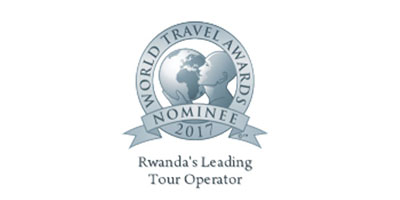Uganda parks & attractions
Top things to do in Kampala
Vibrant Kampala City
Kampala is the capital city of Uganda, located about 40km from the International Airport in Entebbe City. Kampala city is best known for its vibrant night life. As a visitor there are lots of things for you to do and see in Kampala.
adventure and sightseeing
The top things to do & places to visit in Kampala
Kampala walking tour
The Kampala walking tour through the central business district (CBO) is the best way to explore the heart of the city. You get to walk along crowded streets and mix with the locals, visit the local markets, shopping centers and commercial malls to witness a bee-hive of business activities, see the big taxi/bus parks the center of Uganda’s chaotic public transport, etc… The walk through the CBO puts you into the day-to-day socio-economic life of the Kampalans. During the walk you also visit some important landmarks of the country such as the independence monument, historical places of worship and cultural sites, giving you important lessons about the journey of Uganda, her people, cultures, etc…
Depending on the part of Kampala you want to explore a safe trail can be established and a local person will be in charge to show you around.
Kampala motorcycle tour aka “boda boda” tour
The motorcycle taxis are popularly called “boda boda” in Uganda. They are the quickest way to go around the city and can access literally any area. Take the Kampala boda boda tour and cruise through the Kampala city visiting the popular attractions & landmarks in the city, access nice viewpoints of the city, go to the suburbs and ghettos, visit historical sites, green spaces, eat in local places and taste the African cuisine, etc… The boda boda can take you anywhere in Kampala without being hindered by the crazy traffic jam.
Note that you should not pick any random boda boda on the street as they are huge safety risk and account for most accidents in the city. There are more professional boda boda riders that have been trained and assessed to take tourists on boda boda tours
Visit to the National Museum
The Uganda National Museum is located within the central division and can be easily accessed during walking tour or boda boda tour. The Museum contains historical artifacts that tell the origin of Uganda, information on the peoples and wildlife of Uganda etc… The museum also has the only BET award in East Africa won by local popular musician Eddy Kenzo who donated it to the museum.
Attend traditional dance performances at Ndere Cultural Centre
Ndere Cultural Center has the biggest and one of the oldest traditional dancing troops in Uganda that organizes performances of different traditional dances of the many tribes in Uganda. The Ndere cultural center is one stop center to see Uganda’s diverse cultures showcased through the different traditional dances. The dances are performed in the evening and therefore the center is a perfect place to end your day after a tour of Kampala City. Note that the dances are performed during specific days in a week therefore you need to confirm that there is a performance on your day of preference.
Experience serenity at Bahai temple Kampala
A visit to the Bahai temple offers a spiritual experience of some sort. There is only one temple of the Bahai faith on each continent and Uganda is lucky to have the one for Africa. The dorm shaped structure stands majestically on top of a hill in one of the suburbs in Kampala. The temple grounds are beautiful with green all around possessing beautiful flowery plants, shrubs and trees that host an array of birds & other wildlife. The Bahai temple is one of the major religious landmarks in Kampala you cannot miss on your Kampala tour. Apart from learning about this unique faith that seems like a universal or neutral faith that welcomes all other faiths, at bahai you enjoy serenity & tranquility away from the hustle of Kampala, watch nature such as birds, and take in lovely views of Kampala from the hill.
The Buganda Royal Tourism Circuit (Kabaka’s palace – the Royal mile – Buganda parliament – Kabaka’s lake)
The Buganda Kingdom is central in the formation of Uganda and actually gives Uganda her name. The Buganda Royal Tourism Circuit includes Kabaka’s palace (Kabaka is the title of the King of Buganda), the Bulange building which houses Buganda parliament (traditionally called “lukiiko”) and the royal mile which is a path 1 mile long connecting the palace to the parliament, are located in Kampala. The Buganda kingdom is now a cultural institution which protects the heritage of the Baganda people. Taking a tour of these cultural landmarks is an educating experience on the pre-colonial, colonial, & post-colonial history of Buganda and Uganda, giving you a lesson about the rich cultures of the black people. It is a revelation into the spectacular administration systems of a people that are absurdly portrayed to have lived a primitive wild life before the white man arrived. As an extra to this tour you include the visit to the nearby Kabaka’s lake, a man made lake that was created the young flamboyant king, Kabaka Mwanga, with the intention of connecting to Lake Victoria so he could easily access Lake Victoria and one of his palace at Munyonyo lake Victoria.
Kasubi tombs
The Kasubi tombs are the burial grounds of the Buganda kings. It is a rich cultural attraction that harbors rich history about the Buganda kings and several traditions about the kingship.
Uganda Martyrs trail and Namugongo Martyr’s Shrine pilgrimage tour
The Uganda martyr’s trail tour is one of the most spiritually nourishing experiences for a Christian pilgrim. It is also a great source of history about religion in Uganda, and culture as the trail overlaps the Buganda Royal Tourism Circuit. The Uganda Martyr’s trail covers martyrdom sites (shrines) where a number of converted Christian pages (helpers) in the Kings’s Palace were killed enroute to the main execution ground in Numugongo now the location of Namugongo Martyrs Shrine located just outside Kampala. The pages had disobeyed the Buganda Kingdom king’s orders that were contradictory to their faiths and accepted to die for their beliefs when the king ordered for their killing. This is a full day experience where you go tracking down the different monuments/shrines of each martyr through the chaotic Kampala City before winding up at the pristine grounds of Namugongo Martyrs shrine where many Christians were executed that didn’t along the way. The tour will also give you a great tour of Kampala City and its suburbs.
Owino market – East Africa’s largest flea market
Owino Market, now called St. Balikudembe Market is the largest flea market in East Africa. It is the market where literally everything is sold and very cheaply. From second-hand clothing, foods, electronics, home items etc… It is the market where both low-income earners and well to do Ugandans and visiting just to see the bee-hive of activity is an experience to remember. You can also visit to buy some cheap clothes or home items or enjoy a local meal.
Craft making centers and markets
Craft centers and markets can not be missed on your tour of Kampala because you must leave with a souvenir that will remind you of the wonderful time you had in Kampala and Uganda and Africa. You can visit a group of talented youths in the outskirts of the city that skillfully make nice woodcarvings of different elements such as wildlife and create an array of crafts and art from recycled materials such as plastics and paper. There also craft markets in city center that bring in crafts made from different corners of Uganda and East Africa. The variety of crafts reflect the different cultures of the people in the region.
Art galleries
If you are a lover of art Kampala has great art galleries for you to quench your thirst. Even none art lover will fall in love with the beautiful and creative art pieces in the different galleries. A number of art galleries are located within the city center and therefore easy to access. One such gallery is the Nomo Gallery.
Gadaffi’s mosque – access Kampala’s best cityscape view point
Now called Uganda National Mosque, this beautiful towering mosque is found in old Kampala close to the central business district. It is mostly visited for its minaret that rewards with an incredible cityscape view of the central business district. It is a must visit place if you want to capture a perfect aerial shot of Kampala city without flying a drone. The mosque is also a good place if you want to learn about the history of the Islam faith in Uganda.
Kampala Night life
Kampala’s night life is compared to none in the region! Period!




